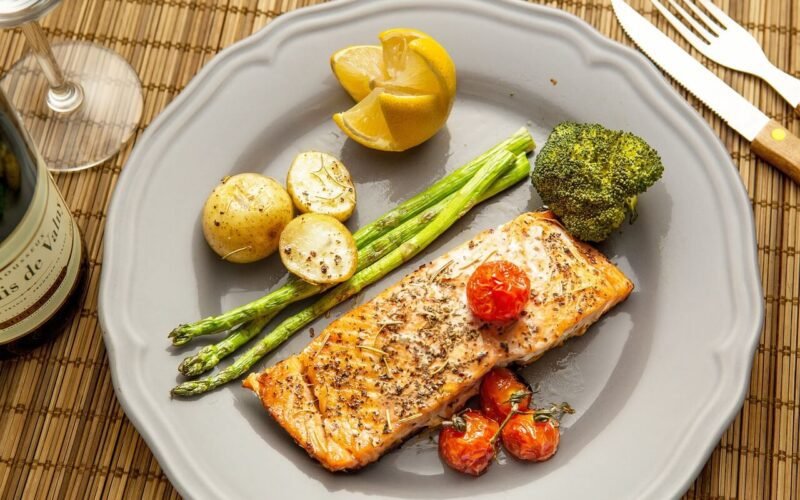Table of Contents
ToggleCooking for Diabetics
As an aspiring personal chef, one of your most rewarding challenges will be creating meals that cater to specific dietary needs. One such need is for the millions of people living with diabetes. Whether it be type 1 or type 2 diabetes, managing blood sugar levels through a healthy diet is crucial for overall health and well-being.
When cooking for clients with diabetes, it’s important to understand the basics of the condition. Diabetes occurs when the body either does not produce enough insulin (a hormone that helps regulate blood sugar) or cannot effectively use the insulin produced. This results in high levels of blood sugar, which can lead to serious health complications if not managed properly.
To help keep your diabetic clients’ blood sugar levels stable, it’s essential to focus on creating balanced meals that incorporate a variety of whole foods. This means including plenty of fresh fruits and vegetables, lean proteins, whole grains, and healthy fats into each meal.
The good news? You can prepare delicious, visually appealing, and diabetic-friendly meals that don’t sacrifice taste for nutrition. Here’s how.
Aspiring personal chefs need to offer something different than traditional chefs who specialize in one or two kinds of cuisines. I’ve written an extensive article with links to many cuisines for your consideration – World Cuisine for Personal Chefs
Understanding Diabetes and Dietary Needs
Diabetes is a condition that affects how the body uses glucose (sugar). It’s essential for those with diabetes to maintain a balanced diet that manages blood sugar levels.
This doesn’t mean they have to give up flavorful foods! It’s all about understanding portion control, especially when it comes to carbohydrates, and knowing which foods to eat more of and which to limit. With the right guidance, diabetes-friendly meals can still be delicious and satisfying.
Carbohydrate Intake
Carbohydrates are a type of nutrient found in foods like bread, rice, pasta, and fruit. They are broken down into glucose during digestion and can significantly affect blood sugar levels. For individuals with diabetes, it’s essential to monitor carbohydrate intake closely as too much can cause blood sugar to spike.
The first step in managing diabetes through diet is understanding how many carbohydrates are recommended per meal based on individual needs. This may vary depending on factors such as age, weight, activity level, and medication use. It’s best to work with a registered dietician or nutritionist to determine an appropriate carbohydrate intake for your specific condition.
In addition to watching carbohydrate intake, it’s also important to choose the right types of carbohydrates. Complex carbohydrates, such as whole grains, legumes, and vegetables, are a better choice for individuals with diabetes as they provide more nutrients and fiber. These foods also have a lower glycemic index, meaning they don’t cause blood sugar levels to rise quickly.
On the other hand, simple carbohydrates like processed sugars and refined flour products should be limited in a diabetic diet. These foods can cause blood sugar spikes and provide little nutrition. It’s essential to read food labels carefully and avoid hidden sources of added sugars.
Protein is Crucial
Protein is another crucial component of a healthy diabetic diet. It helps regulate blood sugar levels by slowing down the absorption of glucose into the bloodstream. Lean protein sources such as fish, chicken, and tofu are excellent choices for those with diabetes.
Fats also play a role in managing blood sugar levels. Good fats, like those found in avocados, nuts, and olive oil, can help improve insulin sensitivity and decrease inflammation. However, it’s important to limit unhealthy fats such as trans and saturated fats found in processed foods and fatty meats.
In addition to making healthy food choices, portion control is crucial in managing diabetes. Eating too much of any type of food can cause blood sugar levels to spike. It’s essential to work with a dietitian or nutritionist to determine appropriate portion sizes based on individual needs.
Practical Tips for Diabetic-Friendly Cooking
As a personal chef, one of the most common requests I receive is for meals that are suitable for individuals with diabetes. With the increasing prevalence of this disease, it’s important for chefs to understand how to prepare delicious and nutritious meals that won’t negatively impact blood sugar levels.
Here are some tips to help you create tasty and nutritious meals:
Focus on Fiber: Foods high in fiber slow the absorption of sugars into the bloodstream, helping to prevent spikes in blood sugar. Incorporate plenty of whole grains, legumes, fruits, and vegetables into your dishes.
Choose Healthy Fats: Avocados, nuts, seeds, and fish like salmon and mackerel are excellent sources of healthy fats. These fats can help reduce inflammation and improve heart health.
Limit Added Sugars: Opt for natural sweeteners like fruits or spices like cinnamon to add sweetness without the extra sugar.
Control Portions: Use measuring cups or a food scale to ensure you’re serving appropriate portions. This is especially important for carbohydrate-rich foods.
Make Meals Colorful: A visually appealing plate can make the eating experience more enjoyable. Use colorful vegetables and fruits to make your dishes pop.
Delicious Substitutes and Recipes
Substituting high-sugar ingredients with healthier alternatives can make a big difference. For example, use whole grain pasta instead of regular pasta, or sweeten dishes with fresh fruit instead of sugar.
Here are a couple of recipes that are both diabetic-friendly and delicious:
1. Grilled Chicken with Quinoa Salad: Marinate chicken breasts in lemon juice, garlic, and herbs, then grill. Serve with a salad of cooked quinoa, diced vegetables, and a vinaigrette dressing.
2. Berry Parfait: Layer Greek yogurt, mixed berries, and a sprinkle of cinnamon in a glass for a refreshing dessert or breakfast.
3. Veggie Stir-Fry: Sauté a mix of colorful veggies in olive oil with garlic and your choice of protein. Serve over a small portion of brown rice for a balanced meal.
Cooking for Diabetics
Creating meals for diabetics doesn’t mean compromising on flavor. With a bit of creativity and understanding, you can craft nutritious and tasty meals that everyone, including those with diabetes, can enjoy. And remember, the best meals are those made with love and care. Happy cooking!
Wondering what tools a personal chef might need? I’ve written an extensive article for you – A Comprehensive List Of Must-Have Tools and Essential Items for the Personal Chef
Here are some of my favorite tools for providing my personal chef service
As an experienced personal chef, I’ve found that the secret to creating mouthwatering dishes goes beyond just having a passion for food. It’s also about using the right kitchen tools. Today, I’m going to share with you my must-have kitchen items that help me bring my culinary creations to life.
1. Chef’s Knife
The first item on my list is a high-quality chef’s knife. It’s the most versatile tool in my kitchen, perfect for chopping, slicing, and dicing. My preference is for a Global Chef’s Knife, known for the edge and the way they are balanced.
2. Cast Iron Skillet
Next up is a good old cast-iron skillet. From searing steaks to baking cornbread, this pan does it all. I love the Lodge Cast Iron Skillet, which retains heat beautifully and adds a nice crust to anything you cook.
3. Stainless Steel Pots and Pans
A set of stainless steel pots and pans is essential for a variety of cooking techniques. They’re great for simmering, boiling, and sautéing. All-Clad’s Stainless Steel Cookware Set is my go-to choice for its exceptional performance and durability.
4. Immersion Blender
An immersion blender makes pureeing soups, making smoothies, and blending sauces a breeze. I suggest the Braun Multiquick Hand Blender, which is powerful, easy-to-clean, and highly versatile.
5. Digital Thermometer
To ensure perfectly cooked meats every time, a digital thermometer is a must. The ThermoPro TP19 Waterproof Digital Meat Thermometer provides speedy and accurate readings, ensuring your roast chicken or prime rib is cooked to perfection.
6. Silicone Spatula
A silicone spatula is a chef’s best friend for its versatility. It’s heat-resistant, non-stick, and perfect for everything from folding batter to stirring sauces. I recommend the OXO Good Grips Silicone Spatula.
7. Stand Mixer
Lastly, for avid bakers, a stand mixer is a game-changer. The KitchenAid Artisan Series 5-Qt. Stand Mixer isn’t just a pretty face; it makes mixing doughs and batters effortless.
These are the tools that I use daily in my personal chef service. Remember, quality tools make a difference, but they don’t have to break the bank. Start with the basics and add on as you grow more comfortable and adventurous in the kitchen.
Happy cooking!

